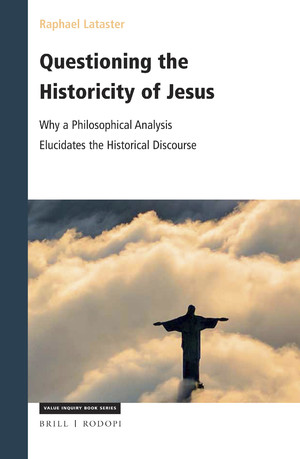 We now come to what I think is Raphael Lataster’s strongest argument yet for being agnostic about the historicity of Jesus. It’s the last part of chapter 6 addressing “problems of Paul”.
We now come to what I think is Raphael Lataster’s strongest argument yet for being agnostic about the historicity of Jesus. It’s the last part of chapter 6 addressing “problems of Paul”.
Lataster begins by pointing out the well-known divergences between the accounts of Paul and the gospels and what these divergences specifically suggest about the theologically fractious evolution of the Jesus narrative. The argument then moves to what Paul tells us of his relations with followers of Jesus before him, especially James, and the many serious questions his comments raise given the assumption that those followers knew or were even related to an impressive prophetic figure now believed to have ascended to heaven. And that brings the argument to that ever contentious passage in the mythicist-historicist debate, “James, the brother of the Lord”.
Again Lataster’s broader knowledge of religion studies (as distinct from the narrower speciality of New Testament) and the histories of newly developing religions enables him to inform readers of the interesting possibility that biological relationships were created to co-opt pre-existing religious ideas into the new faith. Not that Lataster relies upon mere possibilities. Mainstream biblical scholars — in particular two who are “historicists” — are identified as either disputing the authenticity of the “brother of the Lord” passage in Galatians or (again with Bart Ehrman) at least provide enough caveats to lead one to have doubts about its authenticity. I think Lataster is on more secure ground when he develops the in full the argument for this passage not being original to the epistle than he is when reminding readers (as he also does) of the various arguments that the phrase has a range of meanings, especially in religious contexts, and does not necessarily point to a biological relationship. Many conservative biblical scholars reflexively recoil from suggestions of interpolation but Lataster is correct to point out that this reflex is in the main a product of religious conservatism. When the broader context of the dates and conditions of our manuscripts are considered, along with what is well-known about literary reproductions (including forgeries and theologically driven “redactions”) of the day, then it is only sensible and fair to be open to reasonable arguments for interpolations.
At this point Lataster drives home the biases of too many biblical scholars by demonstrating how even reputable names among them publish citations that simply do not support their assertions at all. One has always to look up and check the sources cited because so often vague passages are taken and assumed to be saying something specific in support of conventional understandings, and those works are subsequently cited by other scholars as having long settled the matter. Scratch the surface, however, and one finds that such assertions and citations and recycled quoting are all based on vague or irrelevant sources. The specific case Lataster refers to is Dan G. McCartney’s assertion that one of the church fathers “simply accepts that James was Jesus’s younger half-brother”, yet the three sources cited do not even mention James; and then James McGrath is cited as confidently appealing to McCartney’s assertion as having established that point. Worse, a biblical scholar is quoted making assertions about the church father’s views that directly contradict the explicitly stated words of that church father in the same paragraph. Such is some of the worst of biblical scholarship engaged in arguments against mythicism that Lataster exposes.
Lataster’s case for interpolation of the “brother of the Lord” passage is strong, being based on the use of the relevant epistle by the church father Tertullian who was using it to attack a view of a heretic that Jesus was not truly human. Tertullian points out that the heretic had problems with other gospel passages asserting Jesus had brothers but fails to drive home to the Paul-loving heretic that Paul himself claimed to have met “the brother of the Lord” — even though he quotes verses either side of that passage.
The only slight lack in Lataster’s argument is when he raises the question of why an interpolator would not make the “brother of the Lord” passage even less potentially ambiguous than it is. He fails to consider a common source of interpolations, a marginal note made by one scribe that confuses a later scribe who incorporates that note into the main text. Continue reading “Review part 7: Questioning the Historicity of Jesus / Lataster (The Problems of Paul – 2)”
